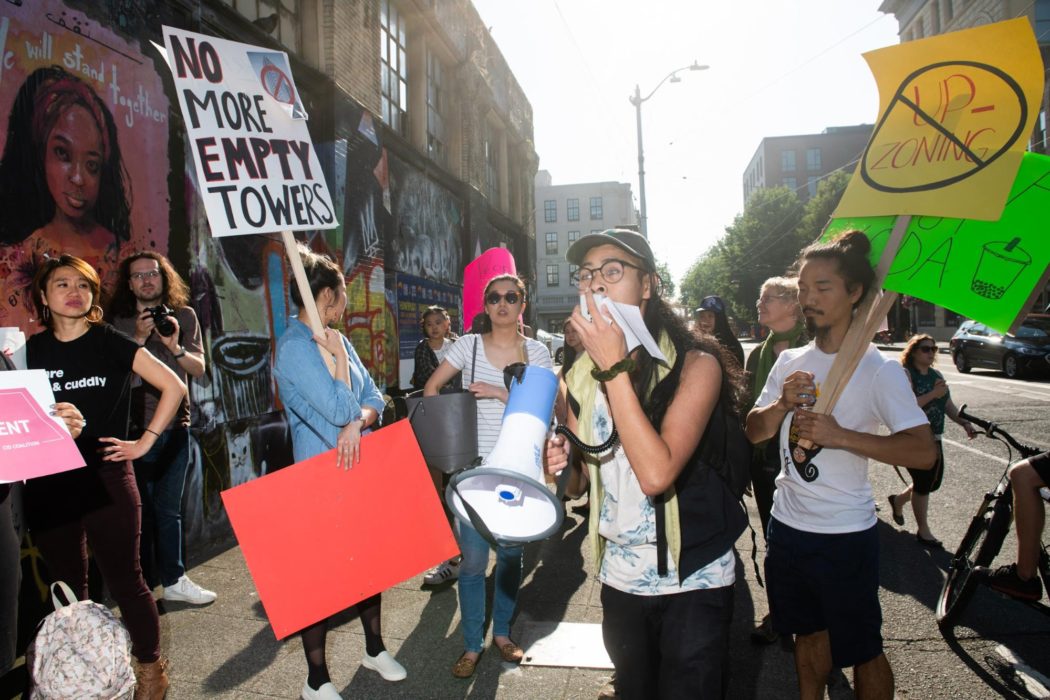
Seattle’s Chinatown International District is one of the few majority-minority neighborhoods in the city, but some worry it may not stay that way. Nationwide, rents in predominantly Asian American and Pacific Islander neighborhoods increased 74 percent between 2000 and 2014, according to the National Coalition for Asian Pacific American Community Development — 21 percentage points higher than the rest of the country. In Seattle, the NCAPACD found that more than 350 low-income families were displaced from the Chinatown International District between 2007 and 2014. As a result, the Asian population has declined while the white population here has grown.
In recognition of the gentrification they’re experiencing, Chinatown communities in Seattle, Los Angeles, San Francisco, and other cities participated in a week of events at the end of May. Seattle’s Chinatown International District Coalition held a march on May 30 to protest the displacement of the neighborhood’s longtime residents and businesses.
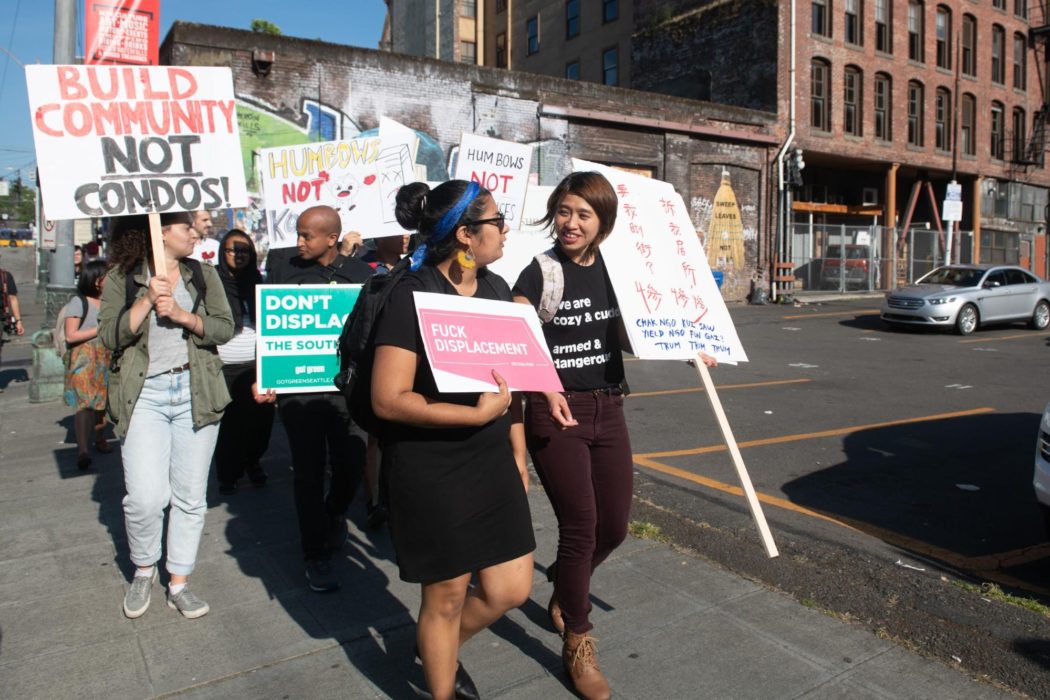
Multiple developments have galvanized the neighborhood. Koda Condominiums, a luxury high-rise, broke ground in February. The CID Coalition is organizing against another proposed building, a 17-story mixed-use project called Jasmine, planned for the site of Bush Garden, a beloved Japanese restaurant and reportedly Seattle’s first karaoke bar.
Marchers snaked along a route from Hing Hay Park, under the Chinatown arch gate, past the Koda site, and on to Bush Garden.
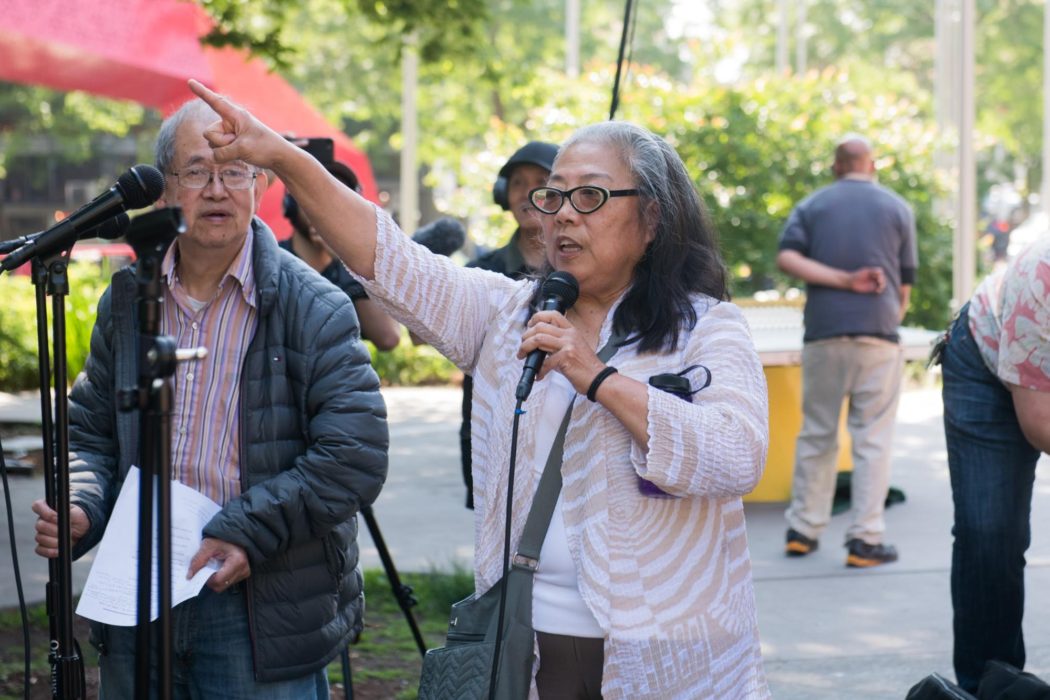
The proposed development would demolish the current Bush Garden building but keep its facade. The restaurant’s owner, Karen Sakata, expressed concern about preserving the neighborhood’s history. “We have a story to tell, and to lose the capacity to tell it would be a great loss for everyone,” she said.
But James Wong, CEO of Vibrant Cities, the developer of the Jasmine project, sees the building as an asset for the neighborhood. Wong grew up in Seattle, and is seeking to revitalize the CID.
“I want to build something great for this community,” he told local radio station KUOW. “Because I grew up here, it’s important to me. I want to build something that we’re proud of.”
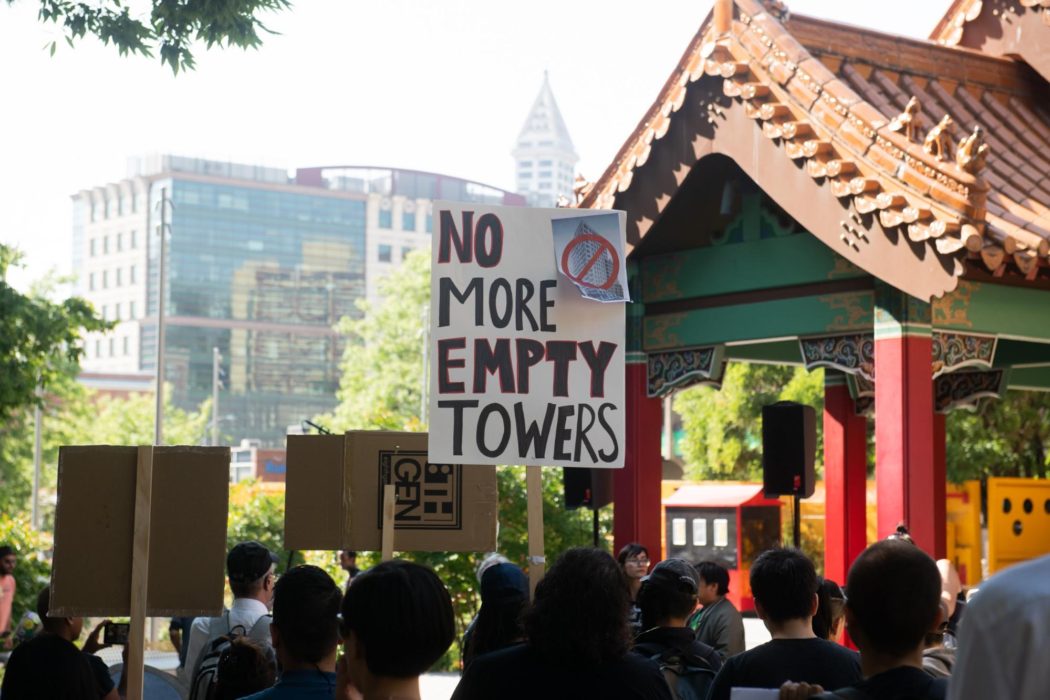
During the rally, around 30 community members shared stories about how changes are squeezing out folks who have inhabited the neighborhood for decades.
When Asian immigrants first settled in the area in the 1800s, many clustered southwest of downtown Seattle due in part to racially restrictive real estate policies in other parts of the city. Then, after the attack on Pearl Harbor in 1942, 7,000 Seattle residents of Japanese descent, many living in the CID, were forcibly relocated to internment camps. But post-war, immigration from Asia continued, and the neighborhood flourished with locally owned restaurants and businesses.
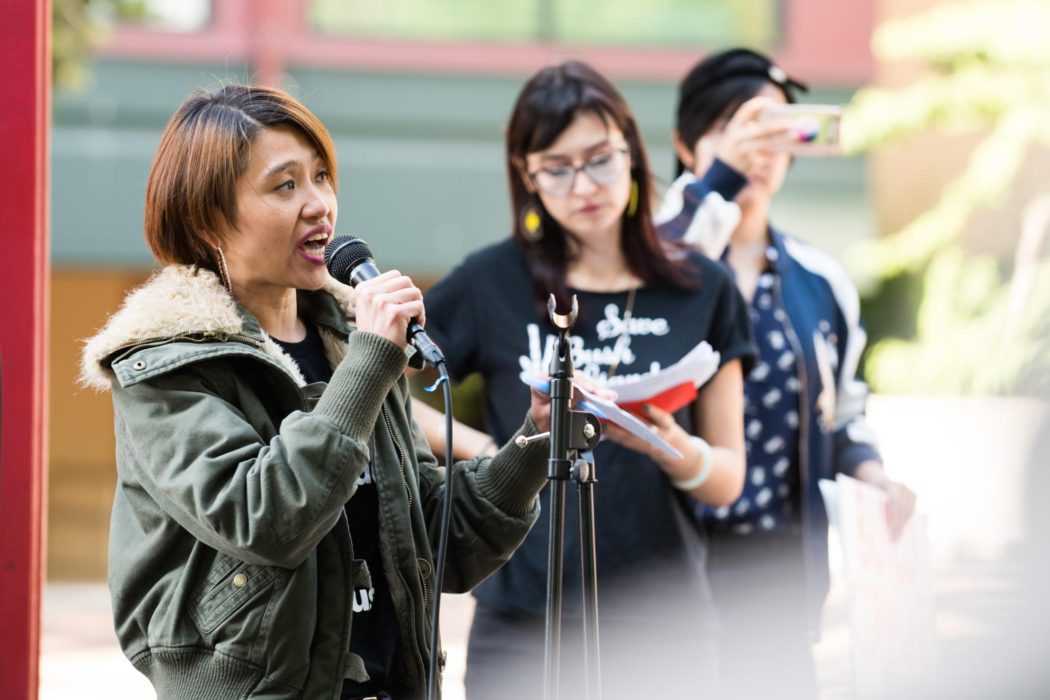
JM Wong of the Pacific Rim Solidarity Network, which advocates for workers’ rights in Chinese communities, spoke at the rally.
“When people think of Chinese migration to Seattle, they automatically think of the [University of Washington], Amazon, Microsoft,” she said. “They’re not talking about the Chinese workers who work in the massage parlors, the ones who hustle in the restaurants working long hours until they want to vomit.”
The neighborhood, Wong said, should be a haven for the working-class minority population in the city, not just a tourist destination. “We don’t want a Chinatown that’s sterile, with fake-ass food,” she said.
Members of the CID Coalition say that luxury buildings together with media coverage lauding the neighborhood as a new “hot spot” fuel displacement.
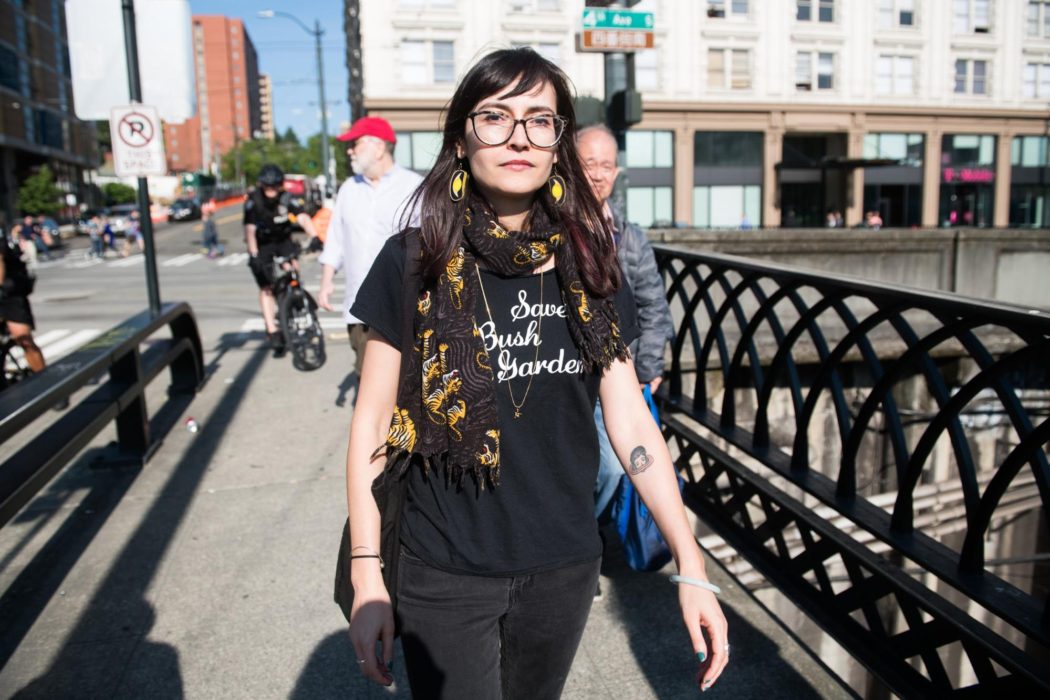
Cynthia Brothers is a founding member of the CID Coalition and runs Vanishing Seattle, a website and Instagram account dedicated to chronicling the places in the city that are disappearing as the city caters to a wealthier populace. Brothers notes that working-class and immigrant communities are pushed out of the very neighborhoods they built up.
“We have city leadership that likes to talk about equity and how they are working to prevent displacement, but very little seems to be done when you look at the reality of what’s actually happening,” she said. “That rhetoric can seem to be a cover for continuing to push forward these policies and provide giveaways to developers.”
The impact stretches beyond diversity, she continued. “People talk about the [CID] from an aesthetic perspective, or as a tourist destination, or a place to eat, and it’s very one-dimensional,” she said. “It ignores the fact that there are people here every day that are living and raising their families and building their lives. It’s a neighborhood.”

